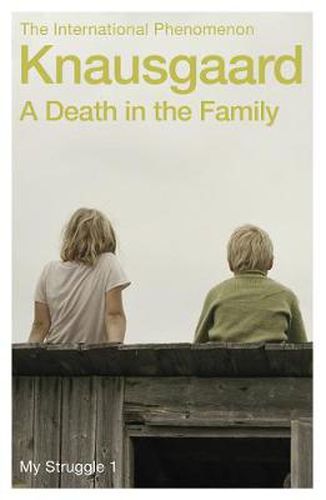What I Loved: A Death In The Family by Karl Ove Knausgaard
Depending on the continent on which you purchase your reading material, Karl Ove Knausgaard’s most recently published work will either be available as a novel entitled A Death in the Family (Australia and UK) or a biography entitled My Struggle: Volume 1 (US). This, I think, is unusual.
Granted, very often, for marketing purposes, books are assigned different titles in different countries on the basis of commercial viability. (In this instance, I can appreciate that Knausgaard’s British publishers elected not to use the title My Struggle given the namesake book by Adolf Hitler.) But under what circumstances could a book possibly be considered fiction in one country and non-fiction in the other? Surely what is verifiably factual in one place is the same elsewhere? Here we come to what makes A Death in the Family an uncommonly brilliant piece of writing: this is a book in which what is true may also be untrue; what is real also unreal; and what is remembered also imagined.
It’s very easy to précis A Death in the Family: a novel describing the childhood of a man named ‘Karl Ove Knausgaard’ in a small town in Norway and the subsequent death of his father. But it’s almost impossible to explain the intense emotional, physical sensitivity and openness with which Knausgaard examines his past, his family, his memories and, indeed, his very self. He has no hesitation in spending pages outlining completely uneventful moments – the making of a cup of tea, for example. Everything is treated with the same dragging, overpowering, elegiac sense of ordinariness. Knausgaard has no fear of being dull, clichéd, boring or even stupid (at different moments he is all of those things, and deliberately so), but the result is exhilarating and terrifying. Somehow, as life piles up on the pages, and the exhilaration and the terror fold into each, the question of whether or not this is fact or fiction dissolves; all that can be said for sure is that Knausgaard is fearless. (In Norway, the book, which is the first of six volumes, caused an unbelievable controversy, and Knausgaard faced legal action from his own family.)
A Death in the Family might justifiably be called monotonous, but, for me, what drove the book ever onwards was the death of Knausgaard’s father: a deeply withdrawn, inexpressive man, and an alcoholic who abandoned his family when Karl Ove was only young. A sort of binary opposition emerges between father and son. Knausgaard senior could seemingly neither say nor express anything, and yet Karl Ove must say it all. His total and relentless exposition of his life and his family is so unpretentious, so naked, so clear, that the conventional yardsticks by which a novel is measured – plot, tone, style, form, etc. – simply crumble away; Knausgaard embarrasses most other contemporary novelists for their artificiality. All I know, one says to one’s self, is that this is real. The raw sensitivity and lucidity of the final hundred pages may never leave me.



